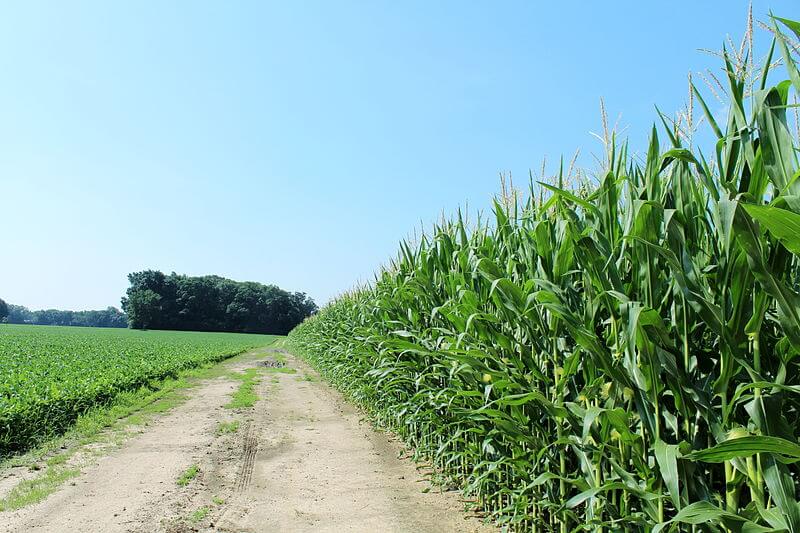
The Midwest can help save our planet’s natural resources with responsible farming practices. Presidential candidates have hinted at it with their plans and speeches in Iowa, but it’s not something we should gloss over as pandering; it’s a real possibility.
Leaders from the California Air Resources Board (CARB), a major influencer in how markets nationwide respond to environmental concerns, took a trip to Iowa last week to visit ethanol production plants and corn farms, talking to ethanol-industry leaders in the state about expanding biofuel usage in California.
The goal was to continue building the working relationship between ethanol producers and climate/air quality leaders to develop carbon-neutral or even carbon-negative forms of fuel. This would present a win-win for many sides — pretty much everyone except the fossil fuel industry and petroleum companies. We could all breathe cleaner air, and the Midwest stands to make a ton of money.
Several of the West Coast visitors seemed like they came away from the week impressed with just how much carbon soil can store, and how efficient corn can be.
Low Carbon Fuel Standard
California, and CARB in particular, is working hard to find ways to transition away from fossil fuels. One day that will mean electric cars, but the country is still a long ways away from a significant percentage of vehicles being electric. In the interim, they’re looking at using corn ethanol as a way to move away from oil and reduce cars’ carbon footprint, as long as it can be produced sustainably and with little-to-no environmental impact.
“Renewables and bio-diesel, renewable natural gas, ethanol, and electricity are all seeing growth under the Low Carbon Fuel Standard (LCFS),” said Richard Corey, executive officer at CARB. “The LCFS is catalyzing investments in these cleaner alternative fuels, providing consumers with more choices, and reducing emissions of toxic pollutants and greenhouse gases.”
Corey, and other members of CARB, were in Iowa to talk about ethanol production and get an accurate, up-to-date picture of what production looks like.
The LCFS is a legislative program designed to reduce greenhouse gas (GHG) emissions, but is fuel-neutral. The aim of the LCFS is to reduce the carbon intensity (CI score) of fuels used in the U.S.
Without getting too technical, CI is “the lifecycle GHG emissions for a fuel per unit of transportation energy delivered.” Simply put, it’s a calculation that puts a number on carbon output during production processes; the lower the number, the better.
Over the last couple decades, ethanol production has become much more efficient. Now, the technology and knowledge are available to produce ethanol through a number of means, some of which are approaching carbon-neutral or carbon-negative outcomes.
How Iowa Fits In
Iowa is a leading corn growing state and has an ethanol industry on standby for a biofuel boom. Millions of dollars have been spent in the state to build and update ethanol production facilities, improve production science, innovate new ways to produce ethanol and further reduce its carbon footprint.
From discussions during CARB’s trip to Iowa, it is clear that the potential for carbon-neutral ethanol is there. From a facilities standpoint, the science is pretty much developed. From a farming perspective, knowledge is rapidly advancing on carbon sequestration, land usage, regenerative agriculture and sustainable practices like no-tillage and “cover-crops.”
It was said several times throughout the week that Iowa’s ethanol producers are waiting for a sign that there is a market for low-carbon ethanol. If California is able to provide that market, even more money will be spent in Iowa to develop facilities and farms to produce corn and cellulosic biofuels with the lowest possible CI score.
In fact, agronomy expert David Clay, a professor at South Dakota State University, said fertilizers are now the biggest challenge in lowering CI scores.
“If we can reduce the need and production of that natural gas nitrogen fertilizer production, we can get to carbon-neutral ethanol production,” Clay explained. “I’ve done some calculations, it’s a very large amount of carbon that can be stored [through the farming process] — just a huge amount of carbon.”
Messaging Will Make The Difference
There seemed to be a ton of learning occurring from people visiting Iowa — the ethanol producers hosting, non-profit groups in attendance, farmers and more. A good amount of time was set aside for discussions amongst all the groups represented, which led to talks of coalition building and limiting opposition to biofuels.
Coalition building was a major point of emphasis, but those in attendance recognized the challenges of bringing together the most staunch environmentalists with the agriculture industry.
“You’ve gotta convince young environmentalists that you can be carbon-negative,” said Mark Nabong, a senior attorney for the Natural Resource Defense Council. “You have to make the pitch that we’re actually pulling carbon out of the air.”
As long as the investments are made in reaching the goal of carbon-negative production, messaging shouldn’t be a problem. However, the sticking point is this: someone eventually has to make the first move. Either California has to give the go-ahead to ethanol producers to invest in lowering the CI of their products, or producers will have to do that on their own, hoping CARB will approve, and the market develops in turn.
By Josh Cook
Posted 9/5/19
